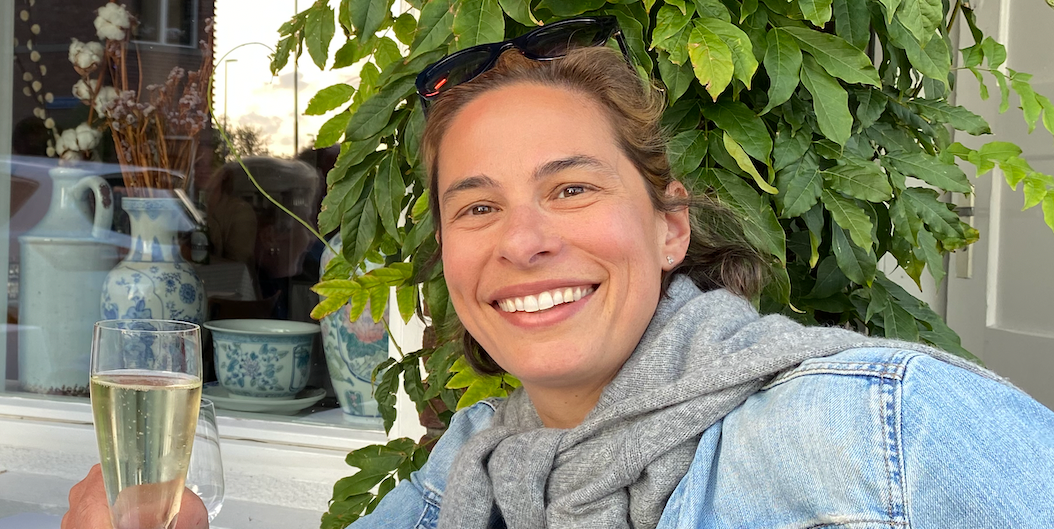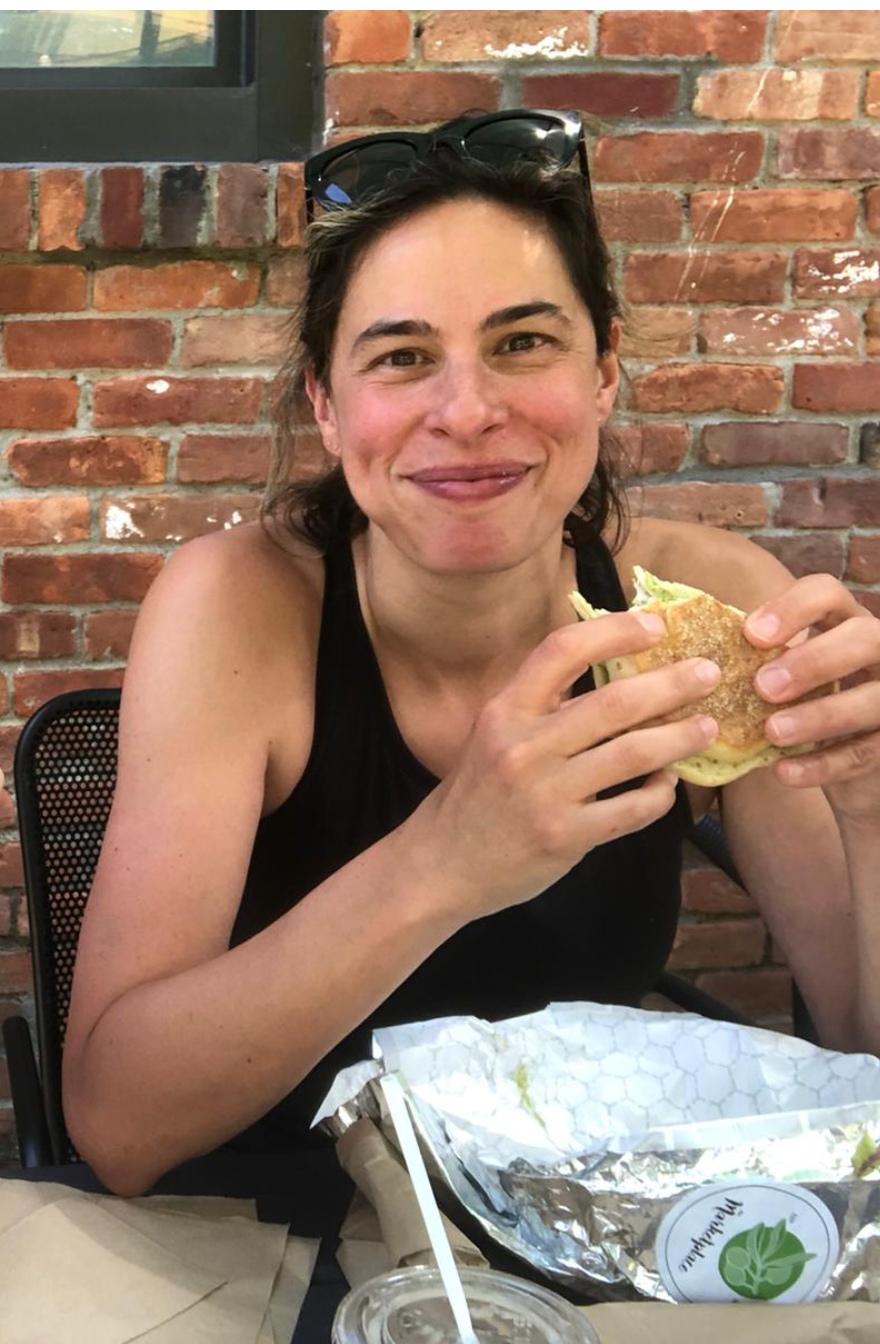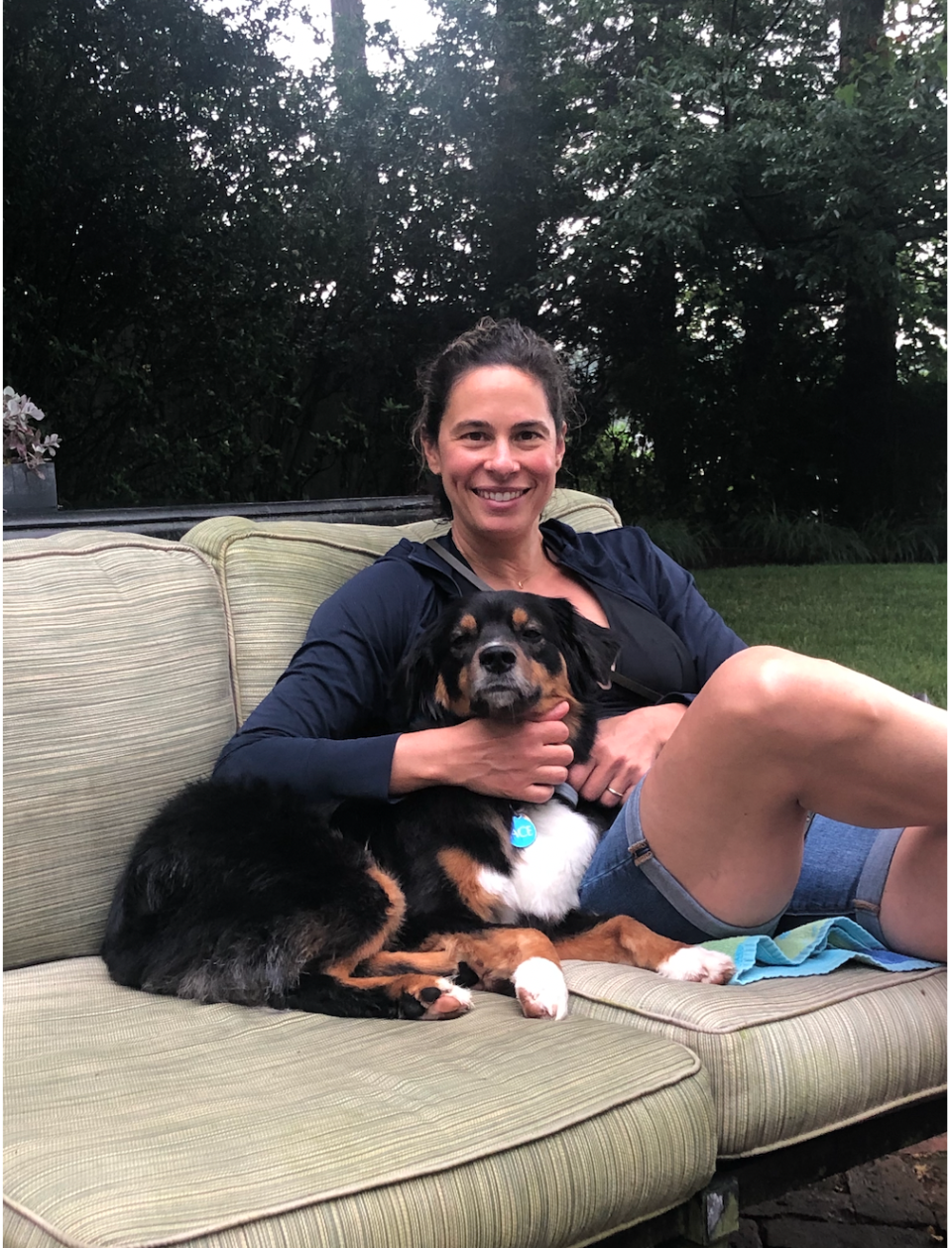‘I Went Into Menopause At 40 After Having My Ovaries Removed—Here’s What It Was Like'

I had known for a long time that I was considered high risk for developing breast cancer. My mother had breast cancer twice when she was young—36 and 45—and my grandmother also had it when she was very young. Because of my family history, I was screened for breast cancer from the time I was 25.
That meant having a mammogram and MRI every year and a sonogram of my breasts every six months. It was intense, but this personal health knowledge and all the screenings enabled me to also feel a little safer, knowing that I had so many health care professionals monitoring me closely.
I knew that the only option that would dramatically lower my risk of developing breast cancer was to undergo surgery.
I found inspiration in an unlikely source. I would need to either to have my ovaries removed, my breasts removed, or both. But I wasn’t willing to consider this route until I had gotten older and knew I didn’t want to have any more children. I had two children in my early 30s, and the surgery question was always in the back of my mind.

But, when I was 39, I read something that made me stop and seriously consider my options. It was Angelina Jolie’s 2013 op-ed for The New York Times, where she spoke candidly about her decision to have a preventative double mastectomy, a procedure where she had both of her breasts removed, to lower her risk of cancer. Jolie lost her mother to cancer, and she learned that she has the BRCA1 genetic mutation that dramatically raised her risk of developing both breast and ovarian cancer. In a 2015 follow-up op-ed, Jolie revealed that she also had her ovaries and fallopian tubes removed to lower her risk of ovarian cancer, but her 2013 story was the first that resonated with me. I definitely credit her with opening up the discussion for me and I’m sure so many others.
I finally decided to undergo genetic testing, something that I had put off until I knew that I would at least consider having surgery. If I had gotten tested before I was willing to get surgery, I would have had to live with the anxiety of knowing the odds were incredibly stacked against me for developing cancer.
I got the test and the results. It was official: I had the BRCA1 genetic mutation, the same one Angelina Jolie had.
From there, it was six months of hell, trying to figure out what decision I wanted to make.
I struggled with the fact that doctors couldn’t tell me if I took preventive measures, like running three days a week and eating broccoli every day, that those would lower my risk of developing cancer the same way that having my breasts and ovaries removed could. I didn’t want to have unnecessary surgery if there was something else I could do, but the answer I kept getting from medical professionals at really amazing hospitals was, “We don’t have the answer.”
What they did know? I was in a very high-risk category, and there was a very, very large chance I would develop cancer in my lifetime. The choice was basically to live with that risk or do something surgically, and only I could make that choice for myself.

Part of my concern was about what would happen after surgery: If I had my ovaries removed, I would be put into menopause.
But there was very little data and information on what that would be like for me, and that was frustrating.
After a lot of consultations with medical professionals and internal debate, I finally decided to remove the ovaries, a procedure called an oophorectomy. There is a statistic that says, if you have this procedure by the age of 40, it reduces your risk of cancer by up to 50 percent, and that really resonated with me. It was a non-cosmetic and fairly easy surgery, I was told, and I knew recovery would be easier than a breast removal, which would have required additional surgeries and implants. This was one and done, so it felt like the best decision for me. Since neither my mother or grandmother died from their breast cancers, I was willing to forego a prophylactic mastectomy and take my odds.
The surgery was easy. It was outpatient and I was in at 7:30 a.m. and home by 2:30 p.m. I was warned in advance that I would go through menopause, but I didn’t really know what impact menopause would have on my body, my mind, my sleep, and my weight. I had no idea what was coming, and since I was so young still, I hadn’t seen any of my friends go through it. And now that my surgery was done, the doctors didn’t have a reason to see me, so I felt pretty adrift.

So, my menopause journey started at 40 years old.
I didn’t have menopausal symptoms right away, and my surgeon explained that your body still has estrogen circulating through it for some period of time after your ovaries are removed. I was recommended supplemental estrogen to treat the symptoms of menopause, but I was also told to take it when I felt like I needed it. (The amount is so much less than what your body naturally makes, so there wasn’t any risk to my health, even as someone who is BRCA-positive. In fact, I was told that it was important for a woman my age to take estrogen because the stress on my body, my bones and my heart without it would have caused significant health issues later on given the effect estrogen has on almost all of our body functions, not to mention skin and hair.)
Suddenly, I started having symptoms and they were...intense. The biggest was that I didn’t sleep through the night for six months. I would be up in the middle of the night, and I never got a full night’s rest, which wasn’t great for my mental health. I also gained about 20 pounds, which wasn’t what I thought I had signed up for. No matter what I did, I couldn’t lose it.
I saw doctor after doctor who prescribed me every type and form of estrogen until I found the right fit. It was difficult to cut through the noise around taking compounded vs. FDA-approved estrogen, the different forms (oral or patch), etc. It seemed like everyone had a different opinion on what was right. This was just one example of how confusing and unnerving all of the complicated info surrounding menopause can be.
Thankfully I had a neighbor who was 15 years older and took me under her wing during this phase—she recommended her menopause practitioner who got me started on menopausal hormone treatment (estradiol and progesterone). Overnight, it changed my life. I started sleeping a full night almost immediately, and the rest of the symptoms resolved pretty quickly. It was at that point that, buoyed by my new energy, I started Seed + Mill, a vegan dessert and tahini business, with two partners.
When deciding what to do next after I started to wind down my daily management role at Seed + Mill, I saw a fresh opportunity.

I knew I wanted to help women going through menopause, based on my experience.
I wanted to present clear information on what the safe and effective solutions are out there for women, and streamline the process so that others don't have to go to a million doctors to find relief. I partnered with Marie Claire editor in chief Anne Fulenwider, and Alloy was born. We just felt there was an opportunity to make the journey better—menopause is a life stage that has been ignored at best.
More frequently, women are given bad information, even from doctors, and suffer as a result. There was a study from Johns Hopkins showing that only 20 percent of ob-gyns in the United States feel adequately trained to guide their patients through menopause, and only a few medical schools have it in their curriculums. I think this really needs to change.
At Alloy, we’re really trying to approach the topic of menopause with a very frank, no BS, credible, and trustworthy approach—because no one else is. We want women to know that there are solutions, and that you don’t need to grin and bear it as many doctors suggest.
I want women to know that it’s important to engage in your health, well-being, and maintain your friendships during menopause. This can actually be the start of a great period in your life—you just need to know where to turn to for help. I wish I had had the answers sooner. It would have saved me a lot of frustration, hassle, and sleepless nights.
Monica Molenaar is the co-founder of Alloy, a company that aims to change the conversation around menopause and provide women with the information and solutions they need to stay healthy and maintain their quality of life.
You Might Also Like

